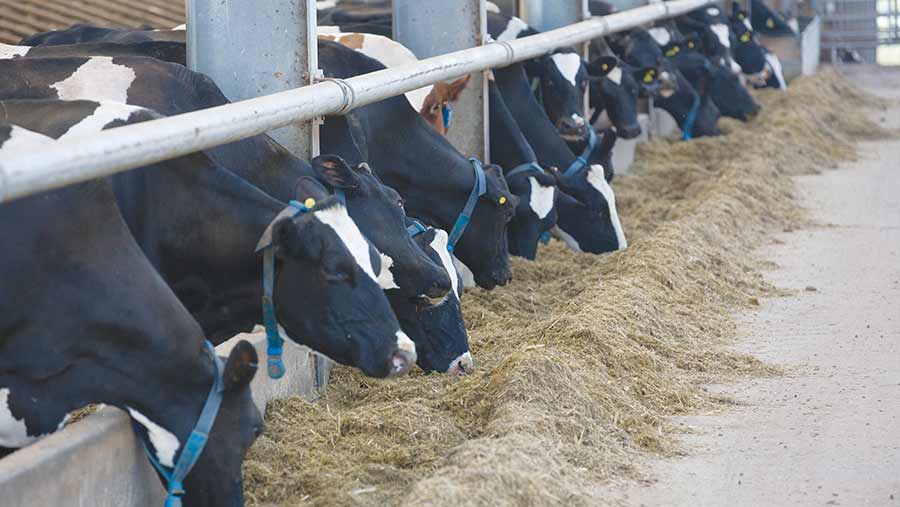Silage crops fall short of crude protein targets
 © Tim Scrivener
© Tim Scrivener Crude protein levels in this year’s silage crops are falling short of targets, experts are warning, which could affect livestock performance if the ration isn’t correctly balanced.
Recent results show average crude protein (CP) levels in 2016 silage crops are 2% lower than target with first and second cuts averaging 14.1% and 14.2%, respectively.
While this is similar to last year’s crop, Dave Davies of Silage Solutions says producers should be aiming for about 16%.
Lower use of nitrogen is to blame, with increasing fertiliser costs, the introduction of nitrate-vulnerable zones and newer grass varieties meaning farmers are applying less.
See also: How to maximise sugar content in grass silage
“The increasing cost of fertiliser is likely to be a catalyst for low CP levels, which we have seen dropping over the past 10 years.
“Sufficient nitrogen is essential to boost protein in the grass, but producers have tended to cut back on its application and consequently we have seen a knock-on effect, with grass crops lower in protein than they could be.
“The problem is exacerbated by newer grass varieties, which are selected because they are higher yielding and therefore, require increased levels of nitrogen to sustain their crude protein concentrations. As well as this, the introduction of NVZs has undoubtedly led to more cautious application,” explains Dr Davies.
How to balance rations this winter
Helen Warren, European technical manager at Alltech, warns that silage-based rations this winter will require careful balancing if the diet is to deliver optimum efficiency and performance.
“Forage-based rations offer significant potential. Not only are they usually home-grown and therefore more economical, their high fibre content promotes rumen health, improving overall diet efficiency.
“However, to get the most out of silage this year, it’s important that the diet is correctly balanced to deliver adequate rumen-degradable protein [RDP], as well as rumen-undegradable protein [RUP] and energy,” says Dr Warren.
A sufficient supply of RDP is particularly important, as it fuels the rumen microbes enabling optimum feed digestion. While this can be supplied from fat-coated urea, Dr Warren warns that this form of non-protein nitrogen (NPN) can be wasteful due to the sudden surge it supplies and can even result in ammonia toxicity.
Instead, she says farmers should use a product to provide a sustained-release NPN.
“A sustained-release NPN provides a much more consistent supply to the rumen microbes, avoiding the peaks and troughs seen with other sources. This enables the microbes to continue functioning, therefore optimising digestion, particularly of the fibre fraction of the diet.”
When balancing the ration, it’s also important to take into account the dry matter of the silage, she says.
“The 2016 silage analysis suggests dry matter is lower than last year, with second cuts slightly wetter than first cuts. Therefore, it’s important to remember that if the silage is wetter, the animal will get less protein a kilogramme of fresh silage intake, which may further increase the need for supplementation.”
